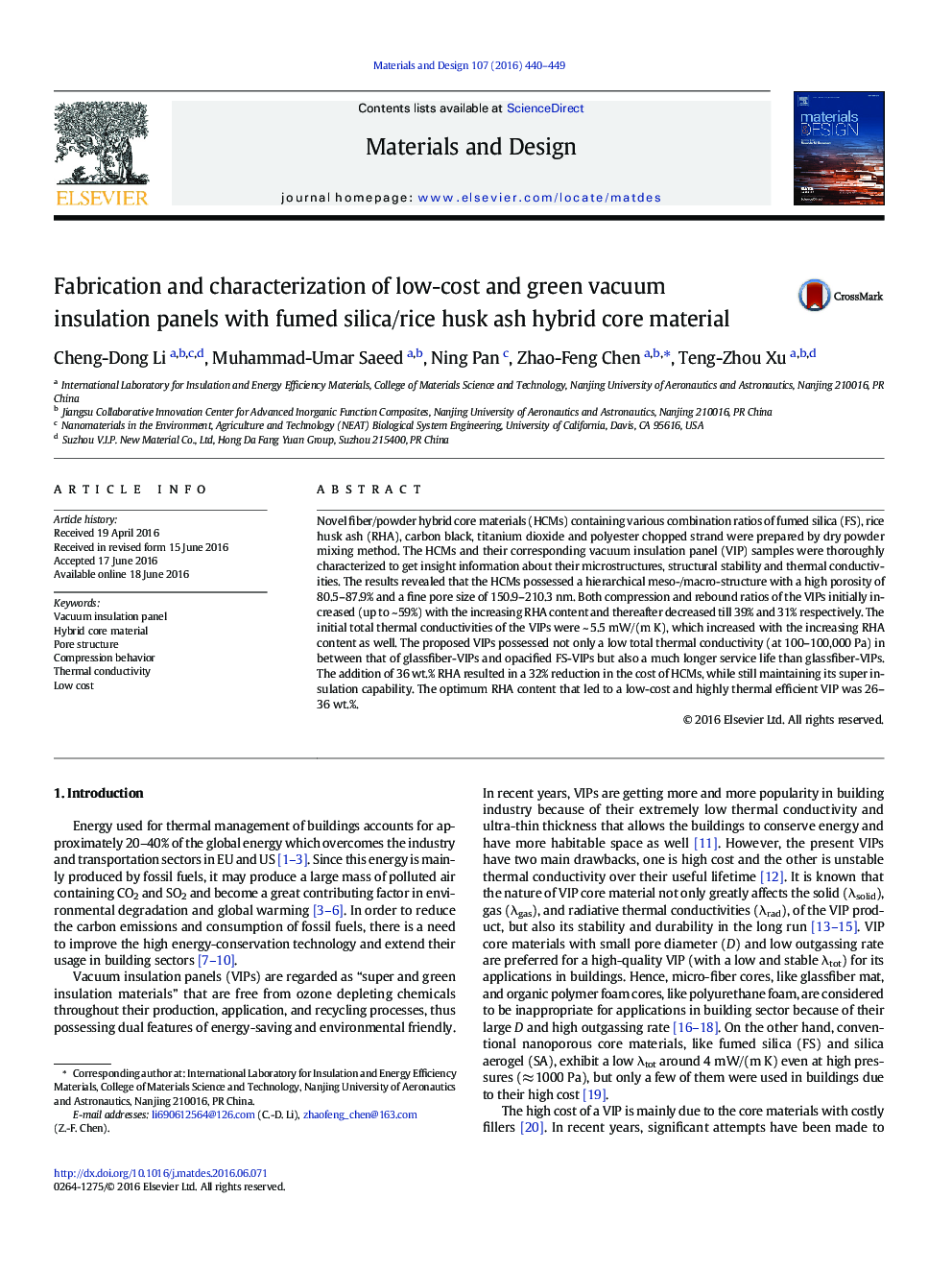| کد مقاله | کد نشریه | سال انتشار | مقاله انگلیسی | نسخه تمام متن |
|---|---|---|---|---|
| 827797 | 1470275 | 2016 | 10 صفحه PDF | دانلود رایگان |
• Pore structure of fumed silica/rice husk ash hybrid core materials was investigated.
• Contribution of gas, solid, and radiative thermal conductivities were investigated.
• Thermo-physical properties of the vacuum insulation panels were compared with each other.
• Rice husk ash content was optimized based on requirements from building applications.
Novel fiber/powder hybrid core materials (HCMs) containing various combination ratios of fumed silica (FS), rice husk ash (RHA), carbon black, titanium dioxide and polyester chopped strand were prepared by dry powder mixing method. The HCMs and their corresponding vacuum insulation panel (VIP) samples were thoroughly characterized to get insight information about their microstructures, structural stability and thermal conductivities. The results revealed that the HCMs possessed a hierarchical meso-/macro-structure with a high porosity of 80.5–87.9% and a fine pore size of 150.9–210.3 nm. Both compression and rebound ratios of the VIPs initially increased (up to ~ 59%) with the increasing RHA content and thereafter decreased till 39% and 31% respectively. The initial total thermal conductivities of the VIPs were ~ 5.5 mW/(m K), which increased with the increasing RHA content as well. The proposed VIPs possessed not only a low total thermal conductivity (at 100–100,000 Pa) in between that of glassfiber-VIPs and opacified FS-VIPs but also a much longer service life than glassfiber-VIPs. The addition of 36 wt.% RHA resulted in a 32% reduction in the cost of HCMs, while still maintaining its super insulation capability. The optimum RHA content that led to a low-cost and highly thermal efficient VIP was 26–36 wt.%.
Figure optionsDownload as PowerPoint slide
Journal: Materials & Design - Volume 107, 5 October 2016, Pages 440–449
